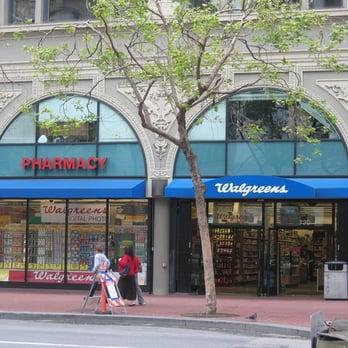San Francisco Walgreens Store Closures Highlight Rising Retail Theft Crisis
Community Reaction to Walgreens Store Shutdowns Amid Growing Theft Concerns
Walgreens’ recent announcement to close several of its San Francisco outlets has stirred significant unease among local residents who depend on these stores for daily necessities. For many households, these closures represent more than just an inconvenience—they disrupt vital access to healthcare products and everyday items, especially for seniors and individuals lacking reliable transportation. Community voices emphasize that these stores serve as crucial neighborhood anchors, particularly in areas grappling with widening economic inequality.
The company attributes these closures primarily to a surge in retail theft, which has made it increasingly difficult to maintain safe shopping environments for both customers and employees. City leaders and business stakeholders now face the challenge of addressing safety concerns while ensuring that essential services remain accessible. The table below illustrates the impact on key San Francisco neighborhoods, including estimated annual customer visits and reported theft incidents prior to the closures:
| Neighborhood | Annual Customer Visits | Reported Theft Incidents |
|---|---|---|
| Mission District | 125,000 | 160+ |
| SOMA | 100,000 | 210+ |
| Bayview-Hunters Point | 85,000 | 190+ |
- Residents: Concerned about losing convenient access to medications and essential goods
- City Officials: Point to rising theft rates as a major driver behind closures
- Advocacy Groups: Call for cooperative strategies that safeguard both public safety and community access
Ripple Effects on Employees and Families in Affected Neighborhoods
The sudden closure of Walgreens stores has had profound economic and social repercussions for employees and their families. For many workers, these jobs provided critical financial stability and benefits. The loss of employment has forced numerous families to confront immediate financial hardships, including difficulties in securing childcare, meeting rent obligations, and navigating the complexities of unemployment support systems. Moreover, the shutdowns have reduced access to affordable healthcare products in neighborhoods already facing economic challenges, exacerbating disparities in community well-being.
- More than 200 employees displaced due to store closures
- Increased financial pressure and housing insecurity reported by affected families
- Significant reduction in neighborhood availability of affordable medications and daily essentials
| Area of Impact | Immediate Consequences | Long-Term Challenges |
|---|---|---|
| Employment | Sudden job loss | Difficulty finding comparable employment |
| Household Stability | Heightened financial stress | Risk of housing displacement |
| Community Health Access | Limited availability of essential goods | Growing healthcare inequities |
Understanding the Underlying Causes of Retail Theft in Urban Areas
Retail theft in metropolitan settings is a complex phenomenon shaped by economic hardship, social instability, and systemic gaps in support services. Many individuals involved in shoplifting come from marginalized backgrounds, facing poverty, scarce employment opportunities, and soaring housing costs. The San Francisco Walgreens closures highlight the paradox where these stores are both targets of theft and indispensable resources for vulnerable populations relying on them for survival. This situation prompts critical reflection on how urban centers can balance enforcement with compassionate social interventions.
Primary contributors to retail theft in city environments include:
- Increasing homelessness and housing precarity
- Limited access to mental health care and substance abuse treatment
- Widening economic inequality and unemployment
- Insufficient investment in community-based crime prevention
- Retail operational challenges such as understaffing and resource constraints
| Factor | Effect on Retail Theft |
|---|---|
| Economic Strain | Desperation leading to theft as a means of survival |
| Social Service Gaps | Unmet mental health and addiction needs contribute to repeat offenses |
| Law Enforcement Focus | Emphasis on punishment may neglect addressing root causes |
Strategic Policy Approaches to Enhance Safety and Support Local Businesses
Effectively tackling retail theft while ensuring the viability of neighborhood businesses demands a comprehensive, collaborative strategy. Policies should foster partnerships among law enforcement, retailers, and community organizations to create safer shopping spaces. Technological investments—such as sophisticated surveillance and inventory management systems—can deter theft without disrupting customer experience. Equally important is bolstering social programs that address underlying issues like poverty and addiction, thereby reducing repeat offenses and supporting economic resilience.
Key policy recommendations include:
- Expanded diversion programs that channel low-level offenders into rehabilitation rather than incarceration
- Financial incentives and grants to assist small businesses in upgrading theft prevention measures
- Community policing efforts designed to build trust between residents, retailers, and law enforcement
- Data-driven monitoring to identify theft patterns and deploy targeted interventions
| Policy Focus | Recommended Action | Anticipated Outcome |
|---|---|---|
| Criminal Justice Reform | Broaden diversion programs for minor theft offenses | Lower incarceration rates; emphasize rehabilitation |
| Economic Assistance | Provide grants for security technology upgrades | Reduce theft incidents; enhance business sustainability |
| Community Relations | Implement neighborhood-focused policing initiatives | Build community trust; improve crime reporting accuracy |
| Technology Utilization | Adopt real-time analytics for theft tracking | Enable precise interventions; optimize resource allocation |
Final Thoughts: Navigating the Intersection of Retail Security and Community Needs
The closure of multiple Walgreens stores in San Francisco, driven by escalating retail theft, extends its impact far beyond corporate finances. It affects the livelihoods of employees and the daily lives of residents who depend on these stores for essential goods and healthcare access. This situation underscores the intricate challenges urban retailers and city officials face in balancing public safety, economic vitality, and equitable access to services. As the conversation around retail crime evolves, it remains crucial to develop holistic solutions that address both immediate security concerns and the broader social factors at play, reflecting a shared commitment to sustaining vibrant, safe urban communities.




